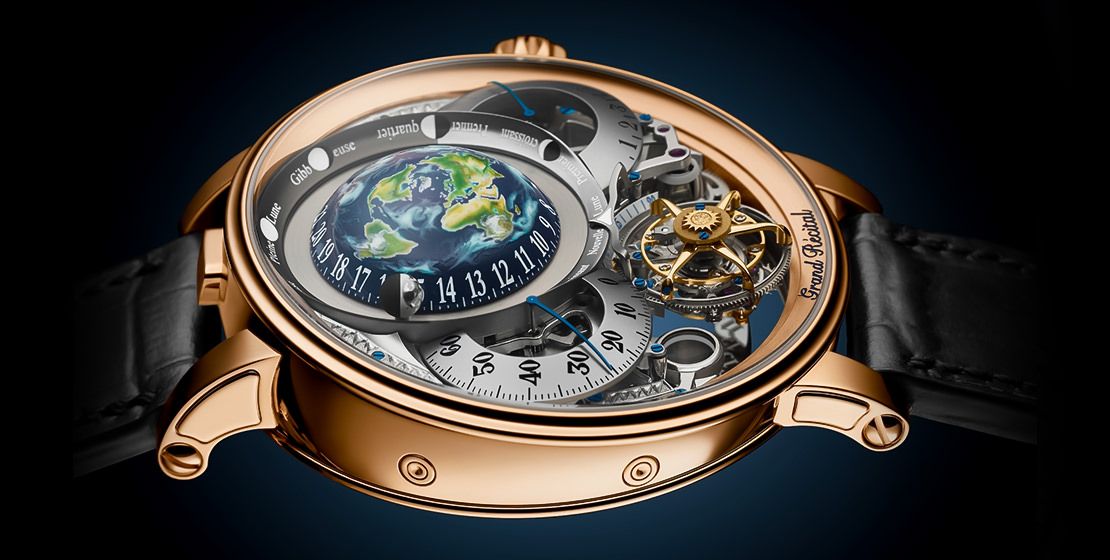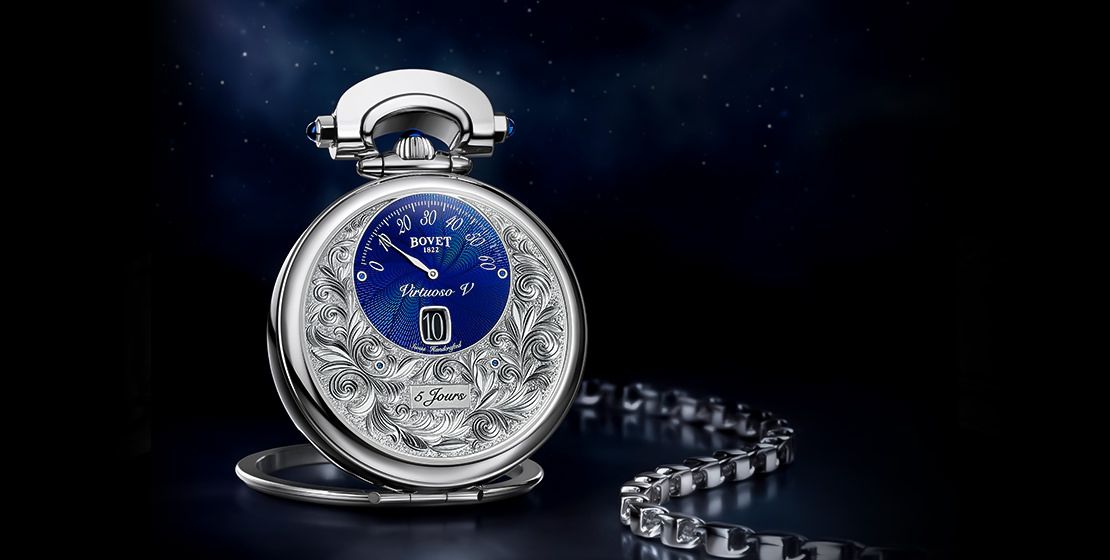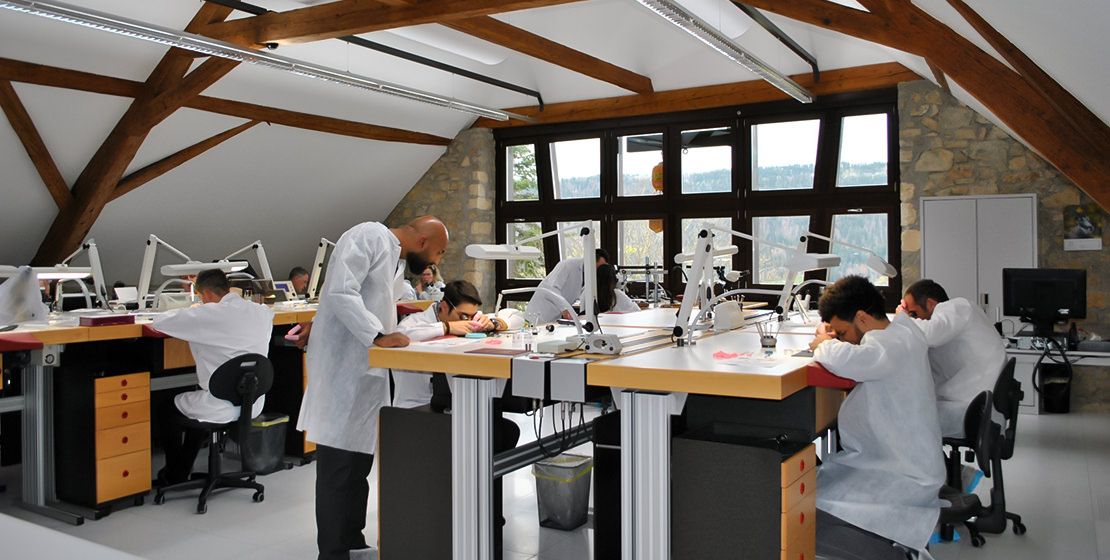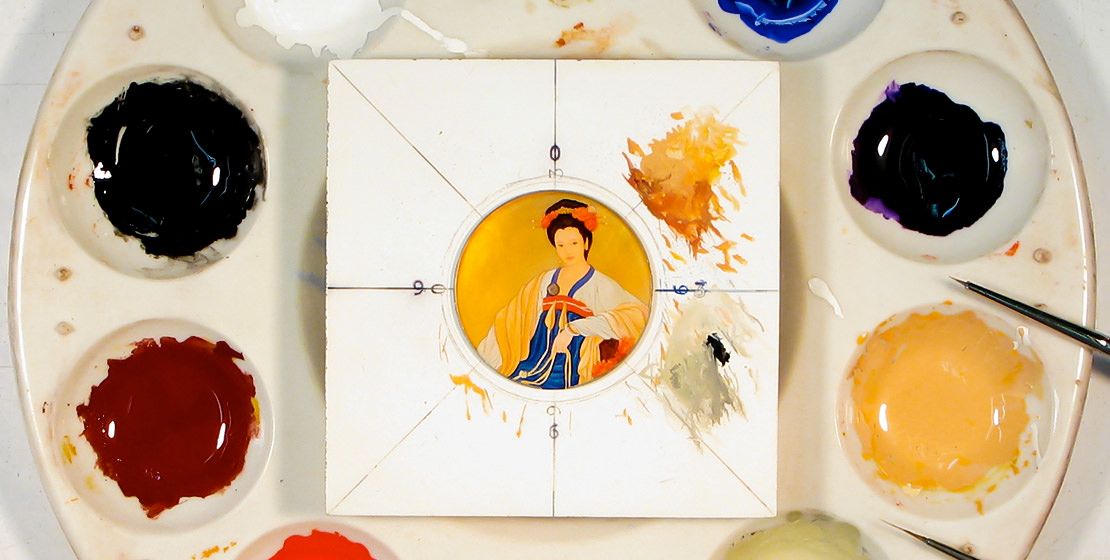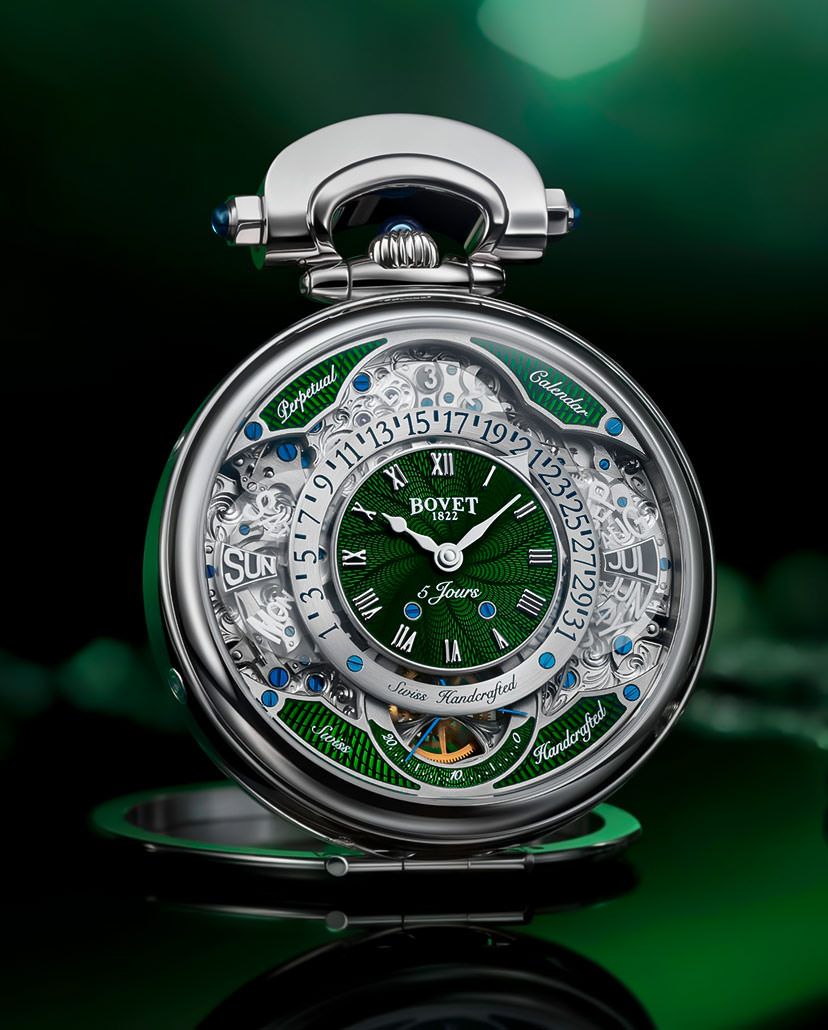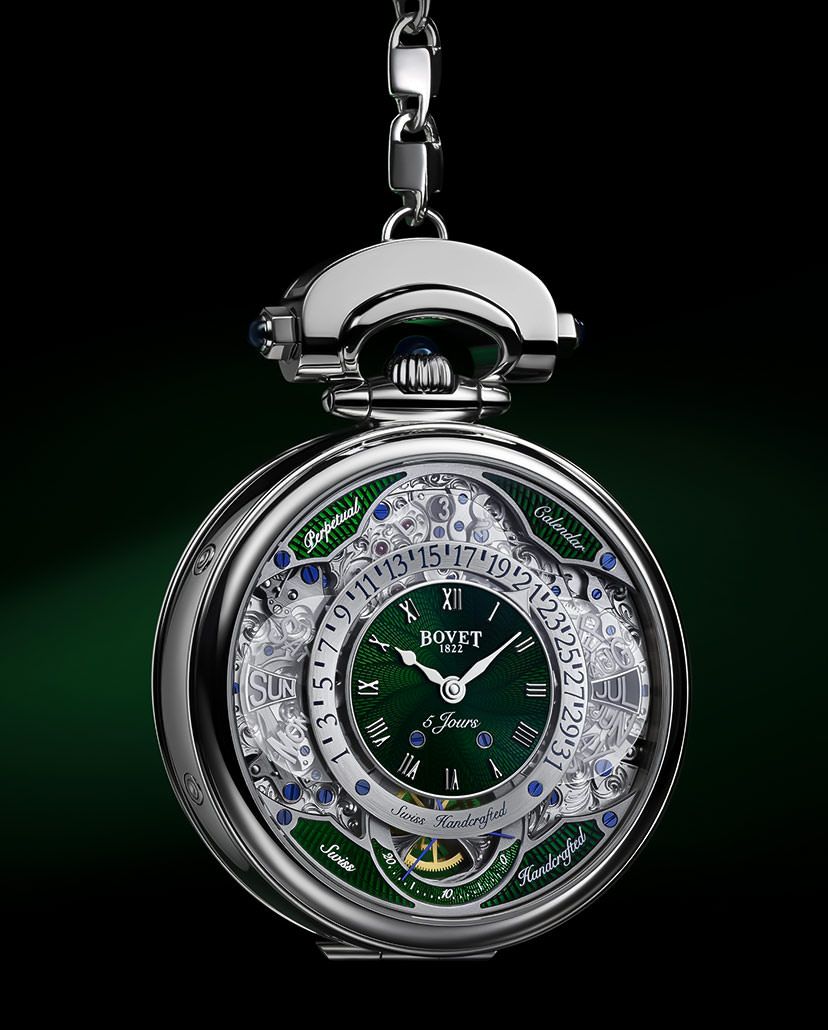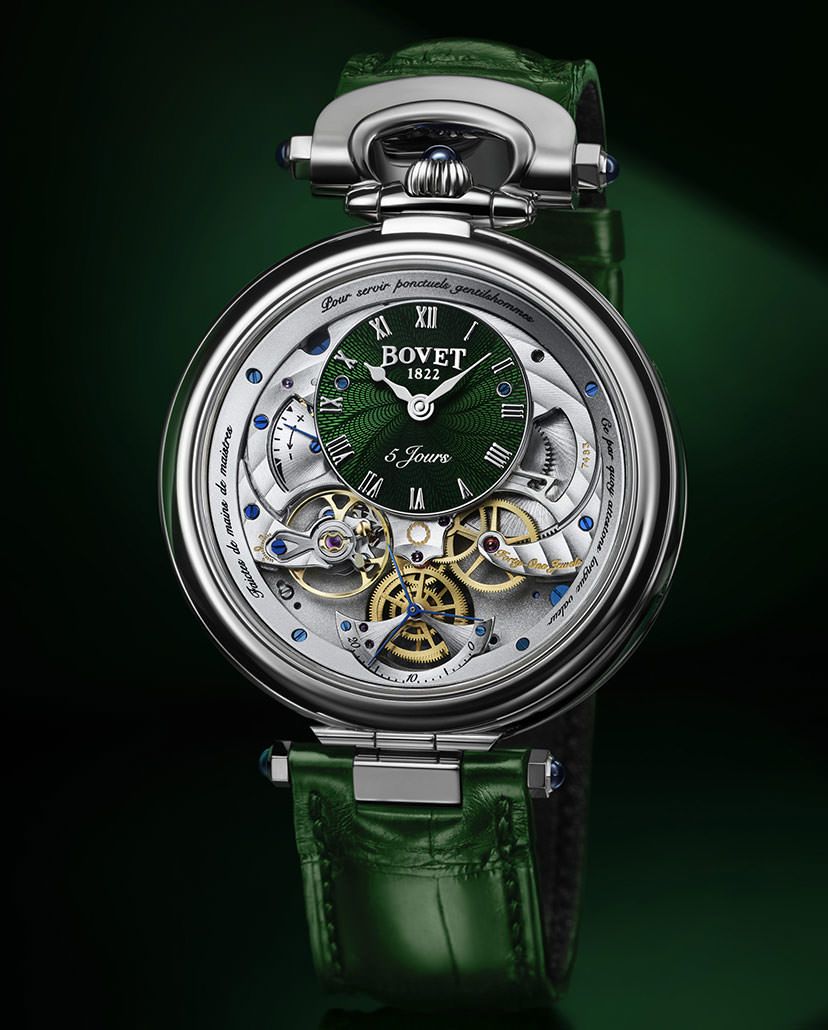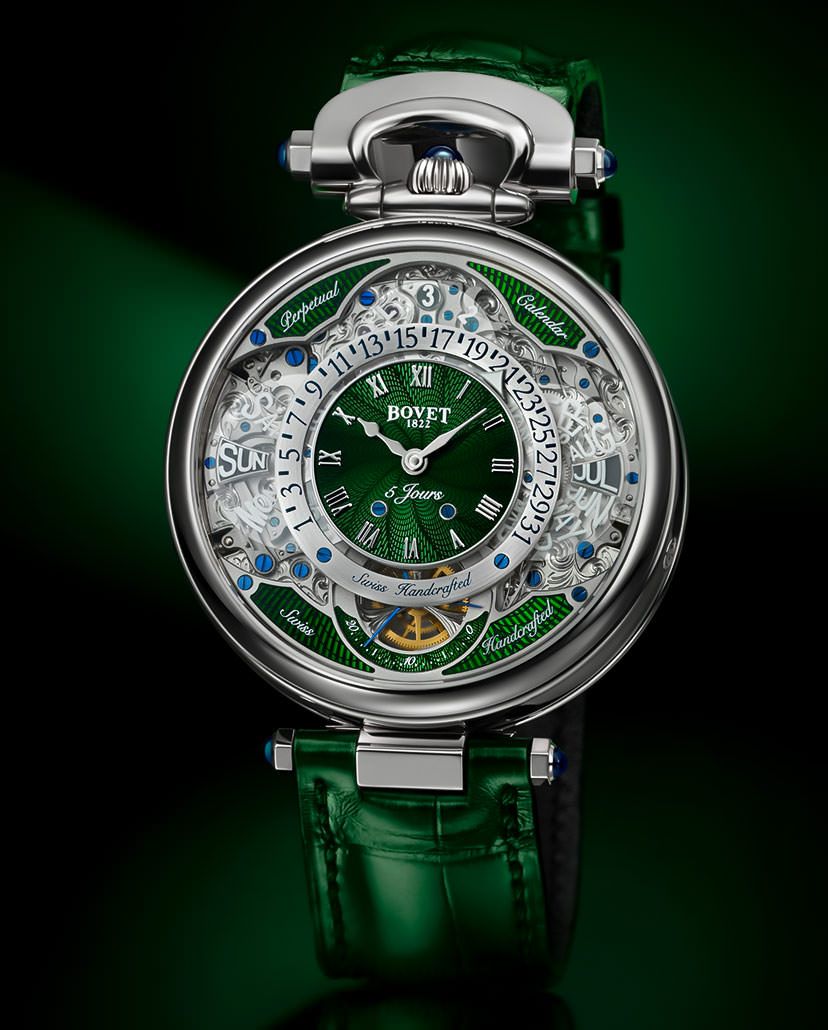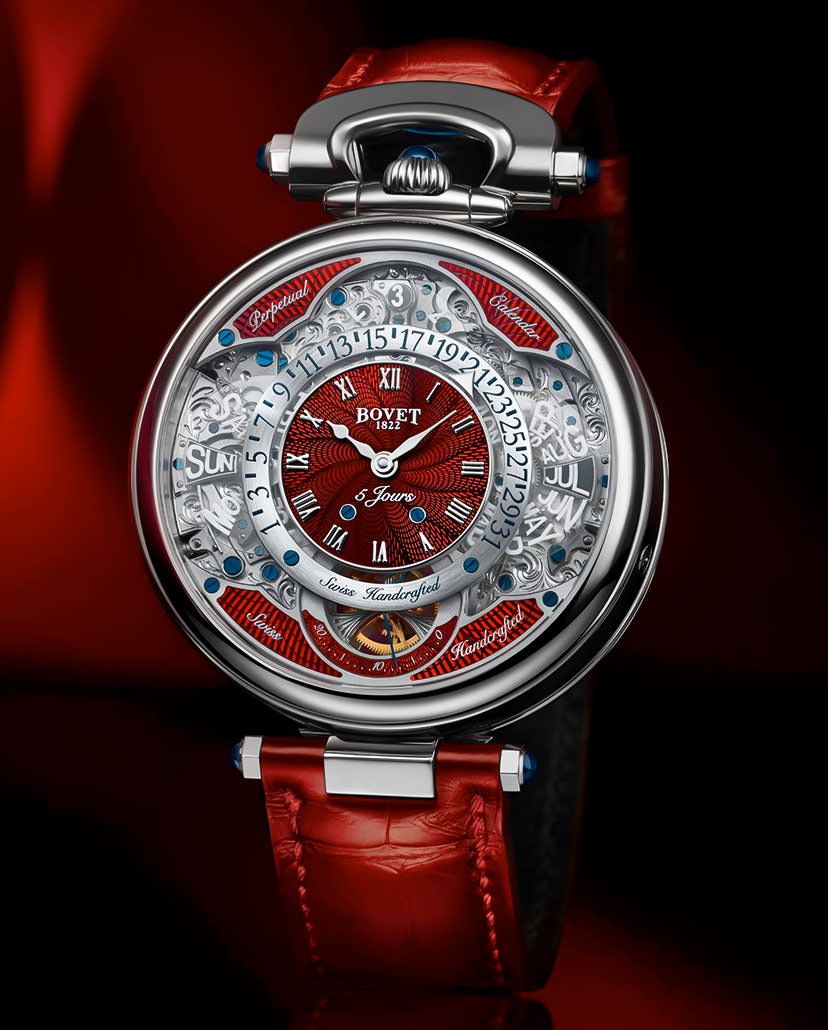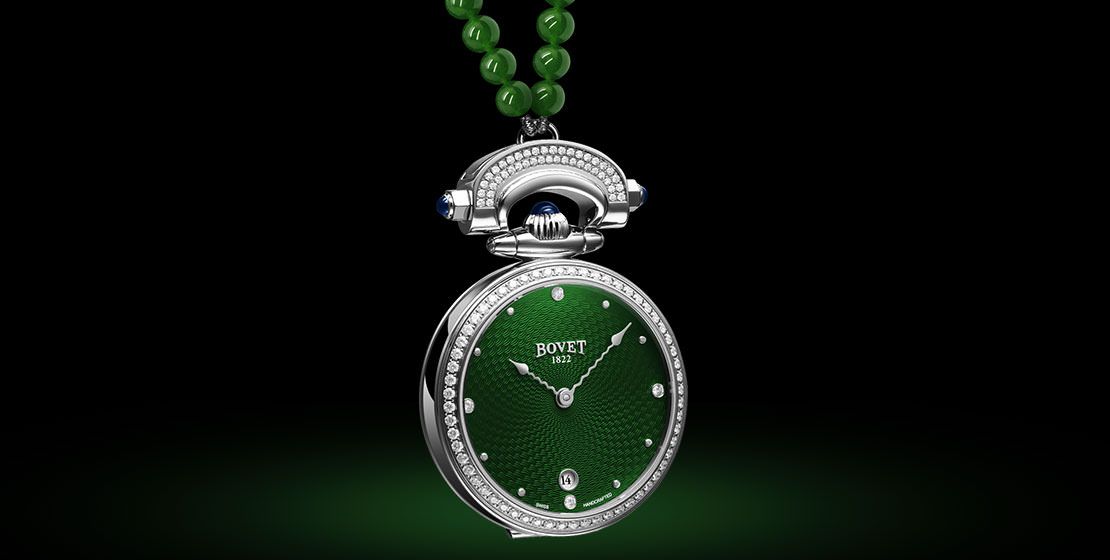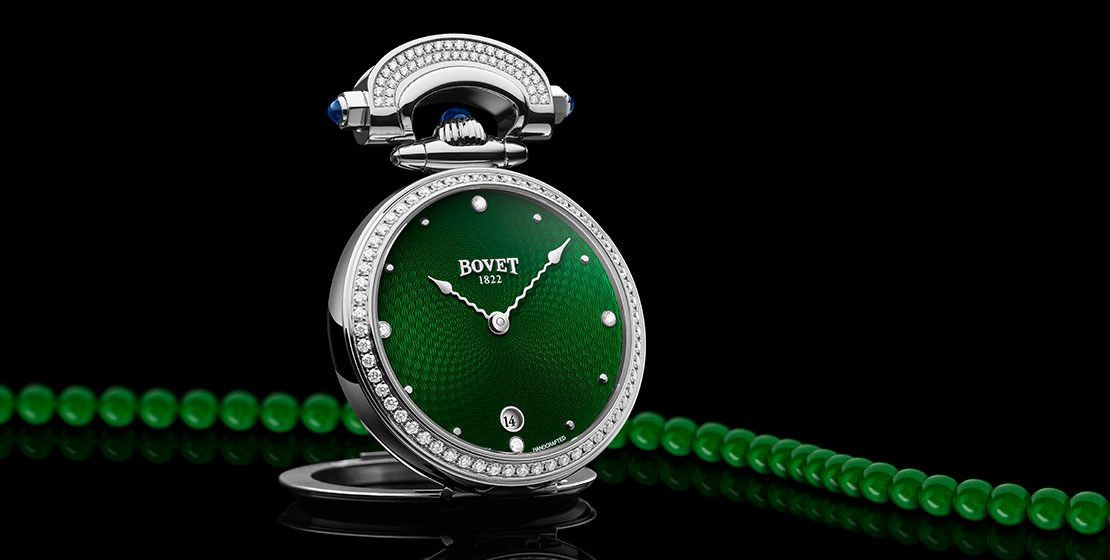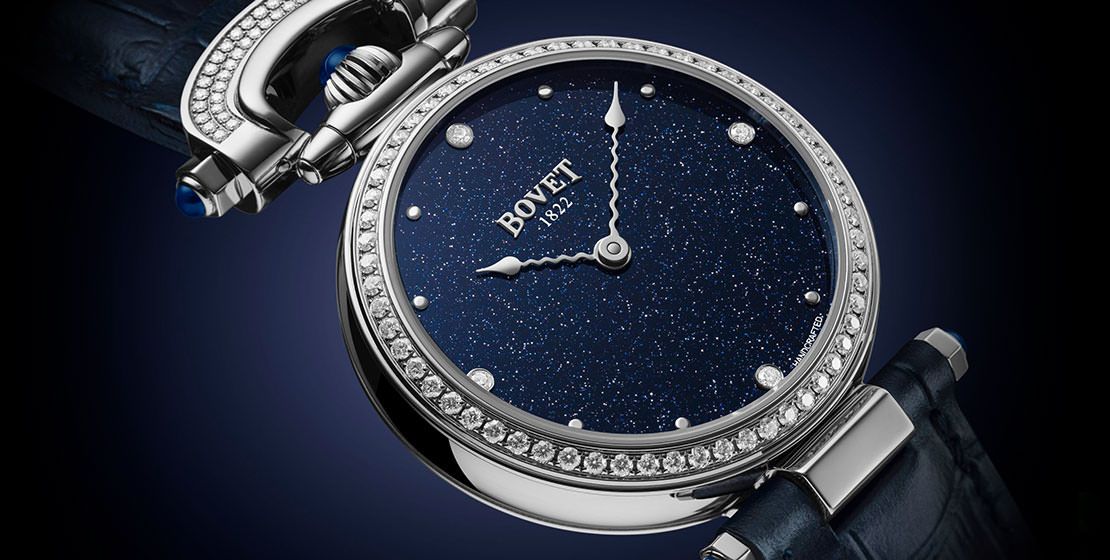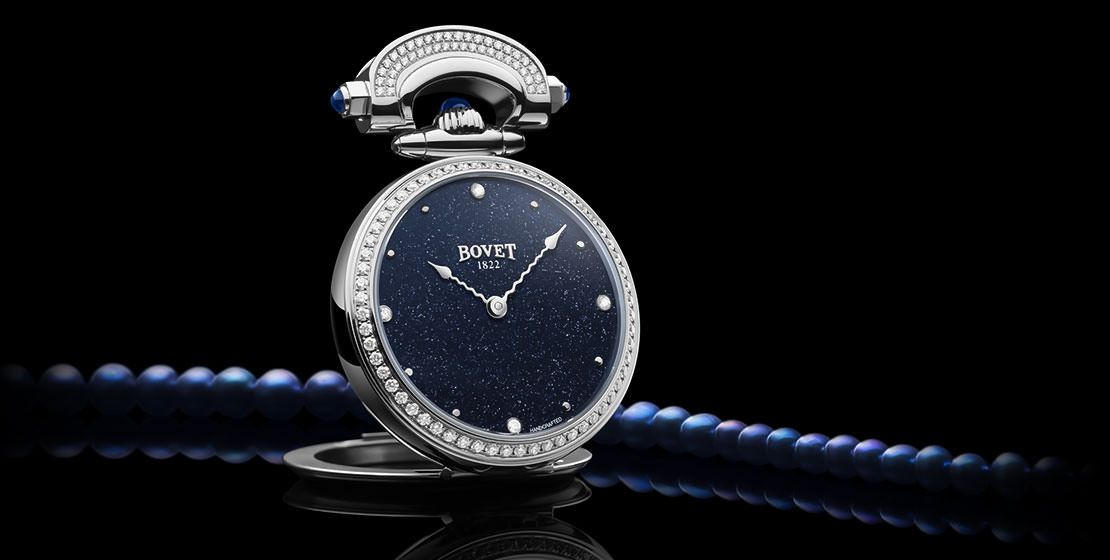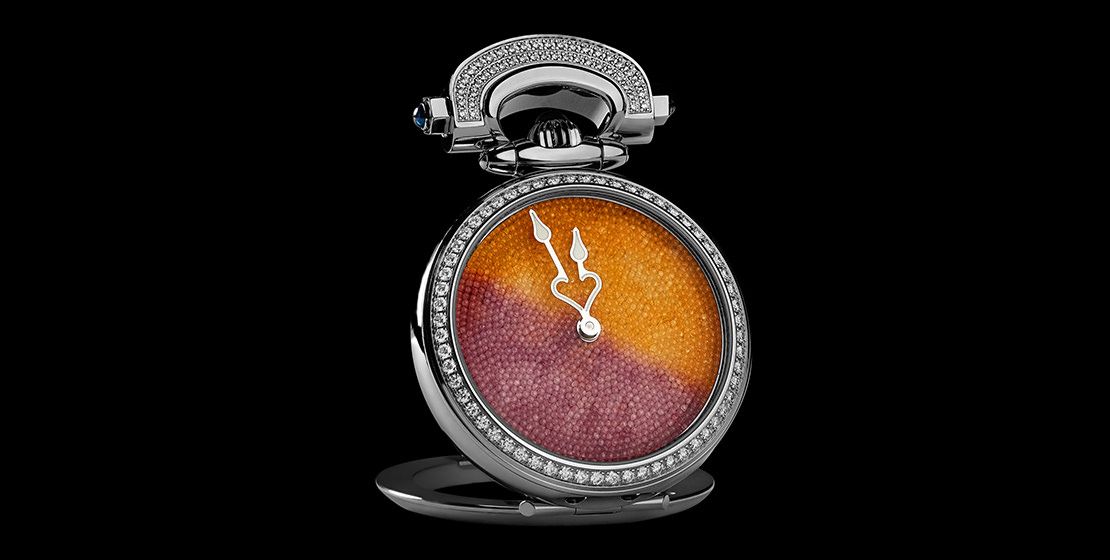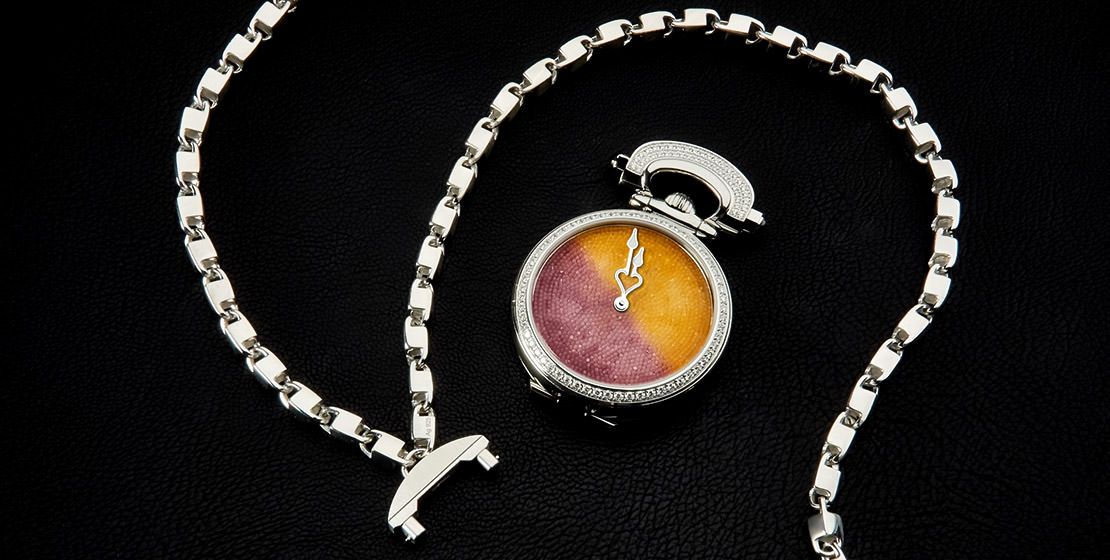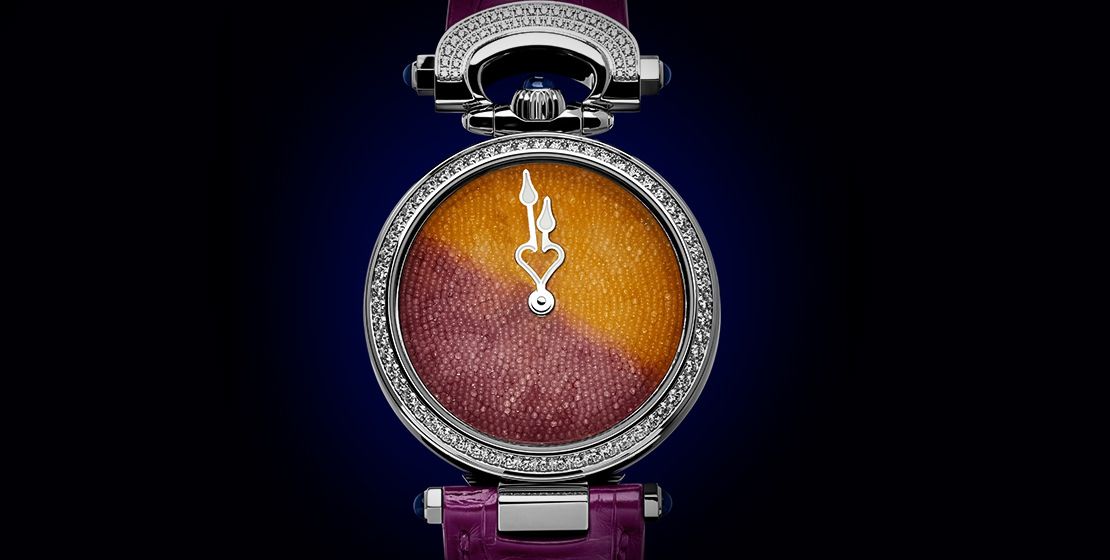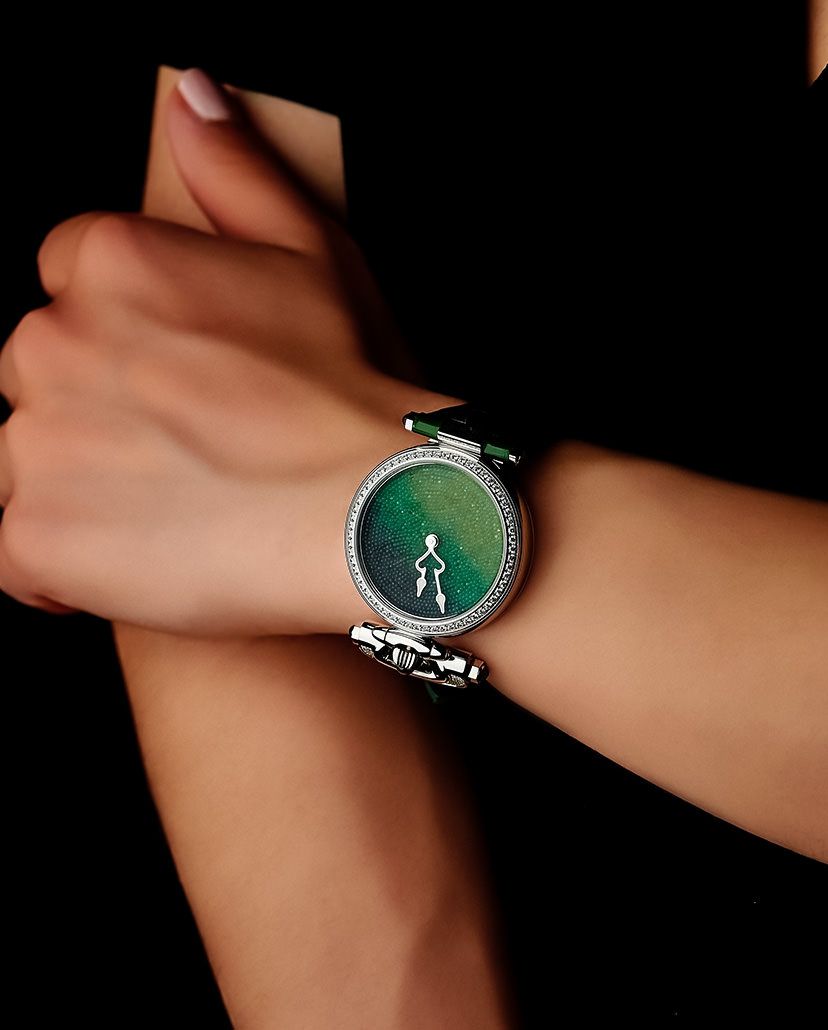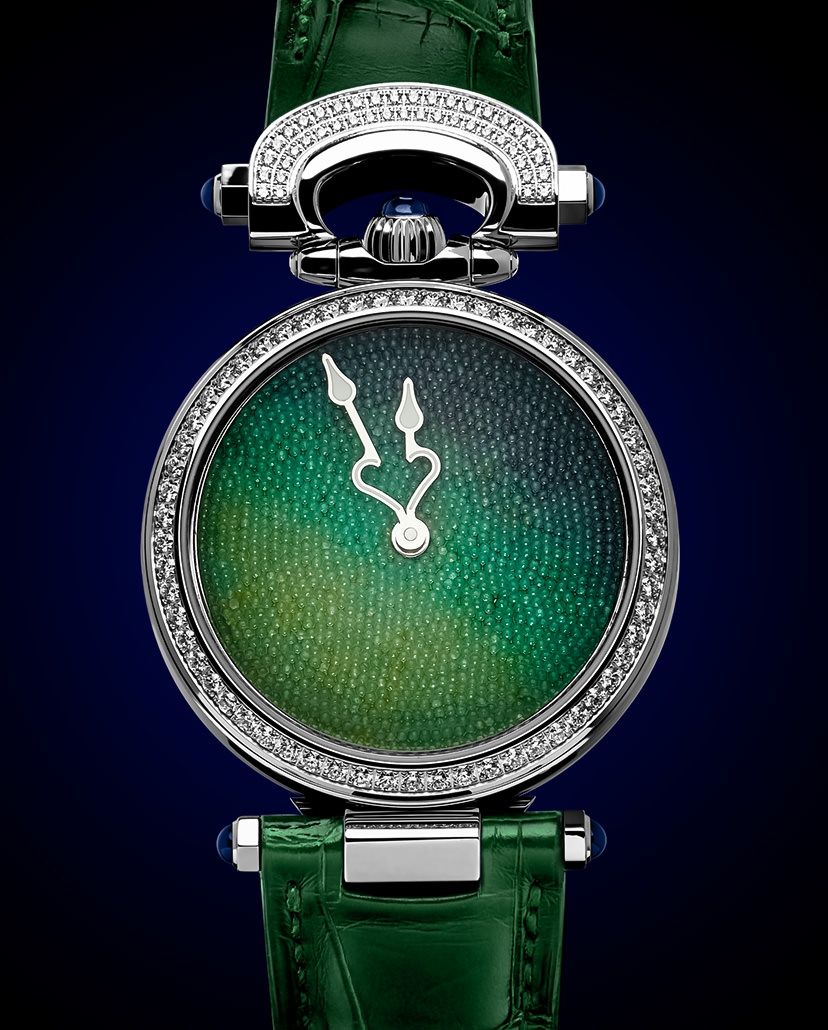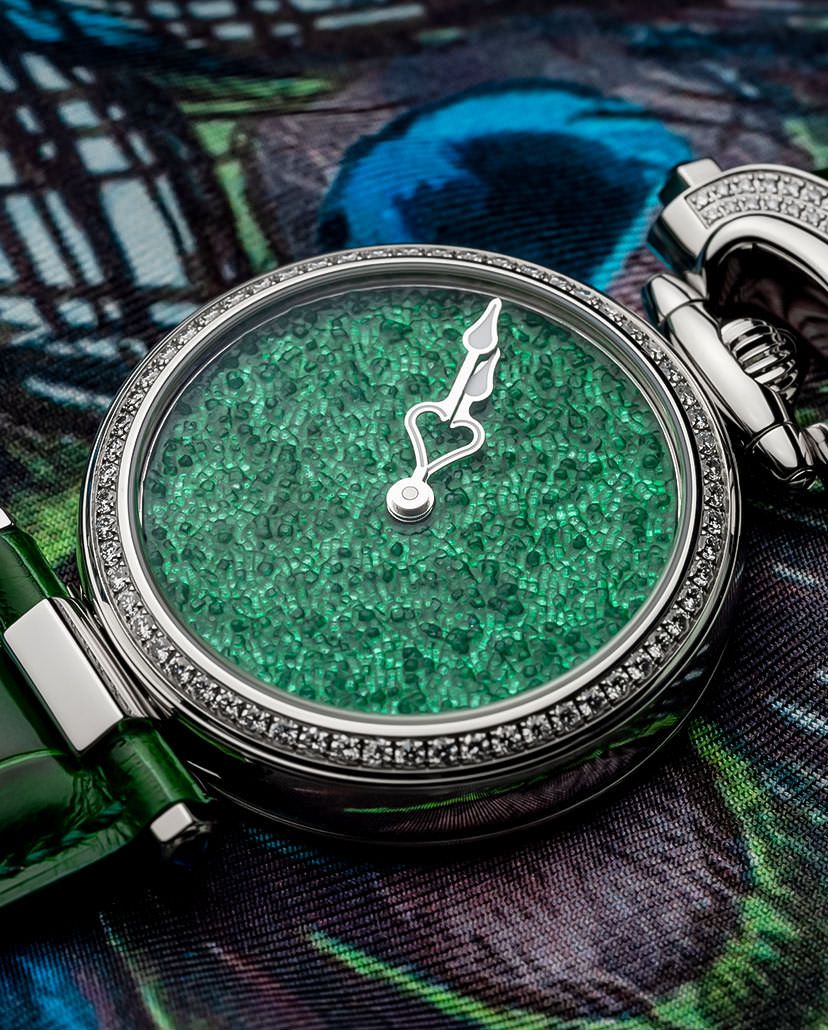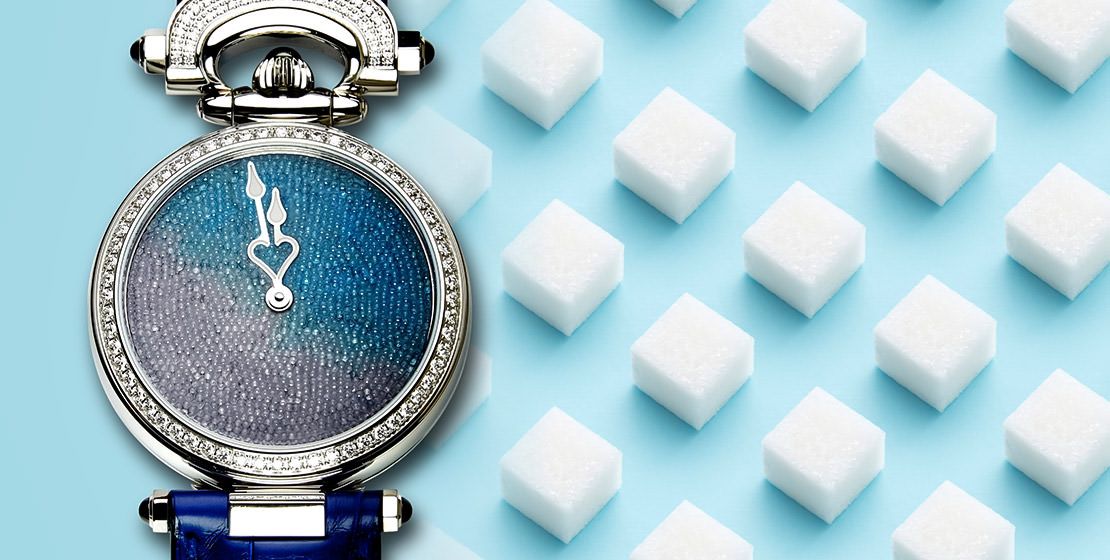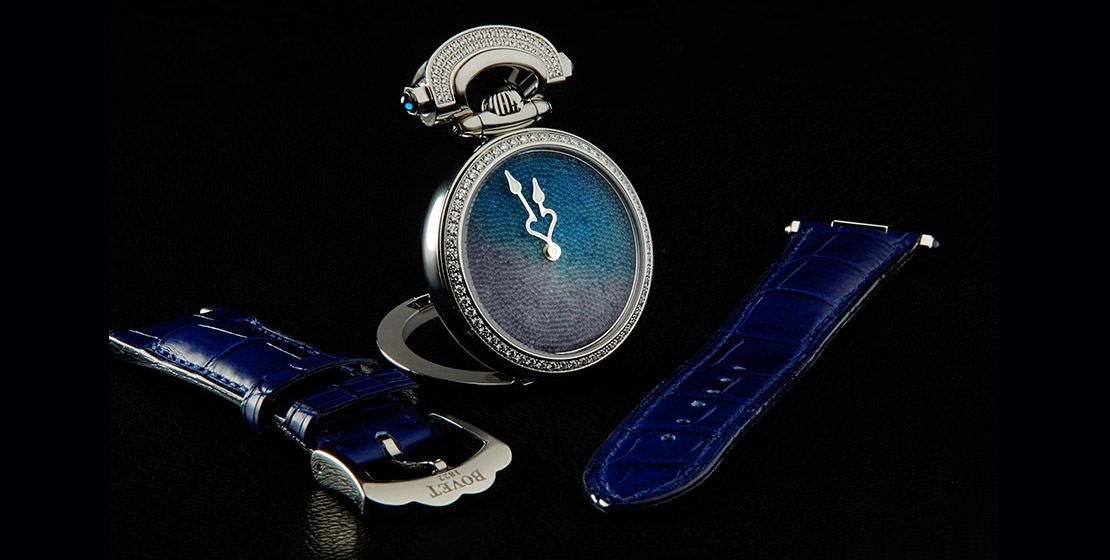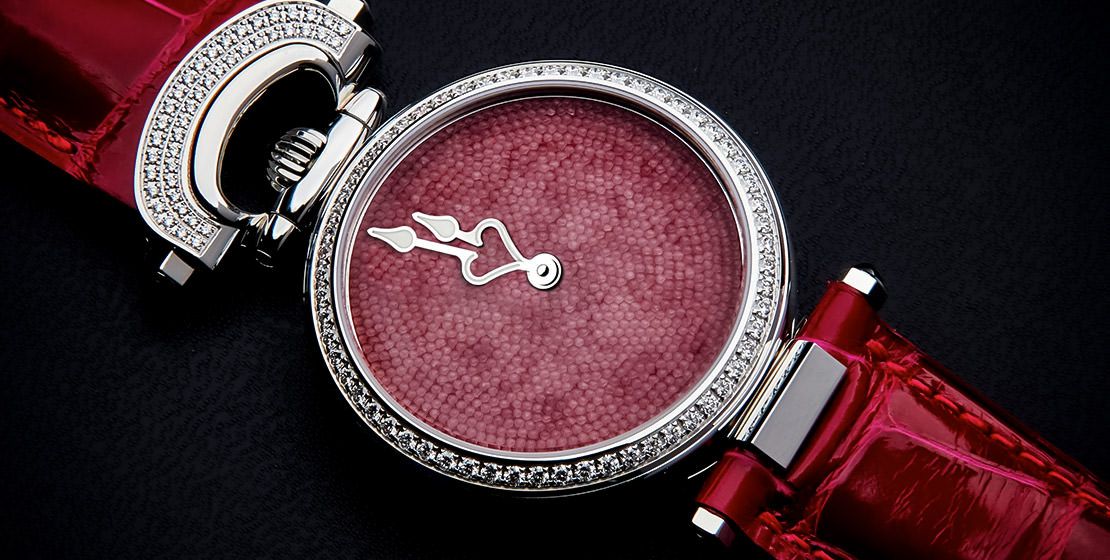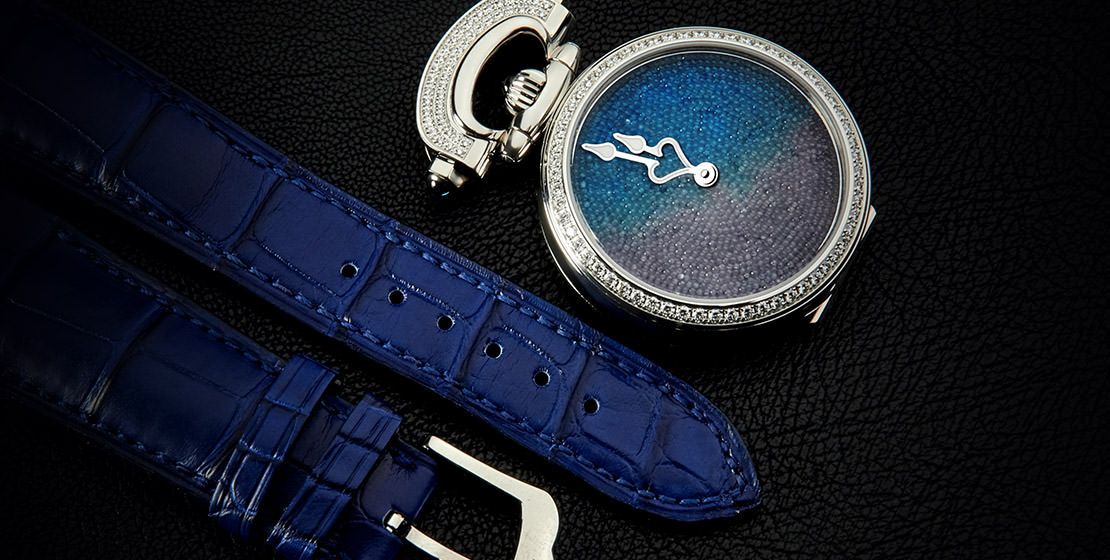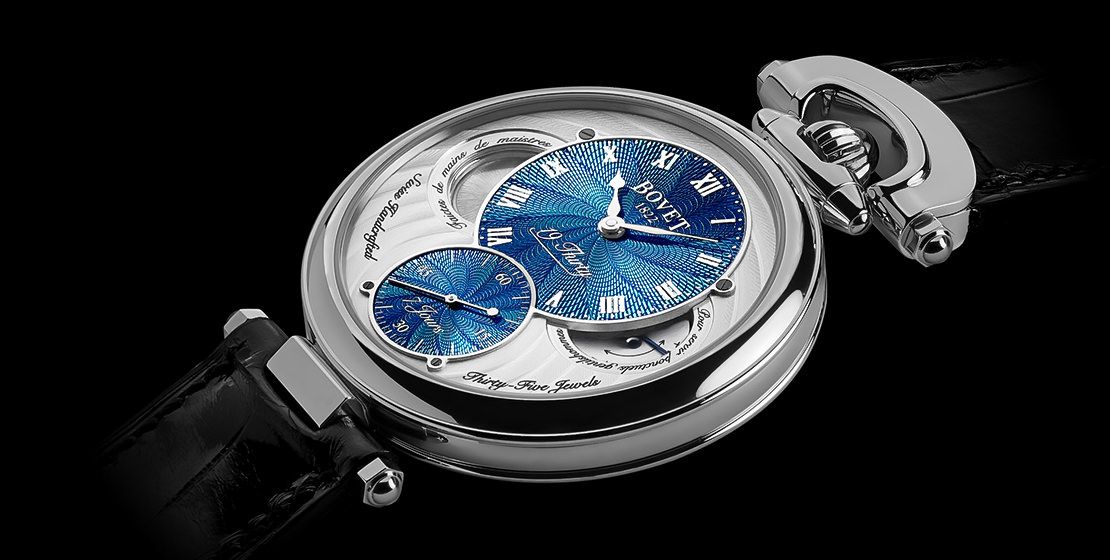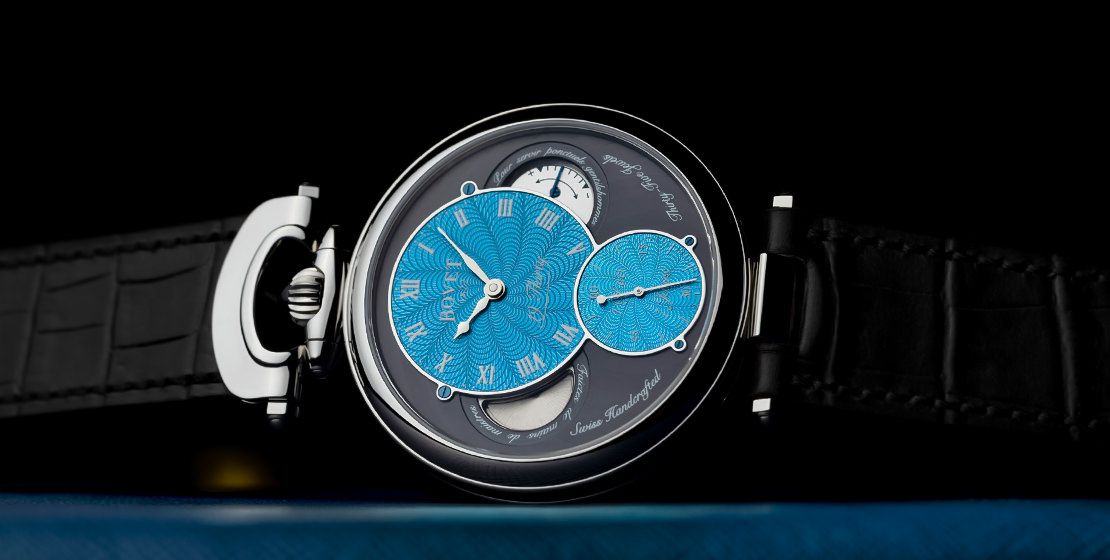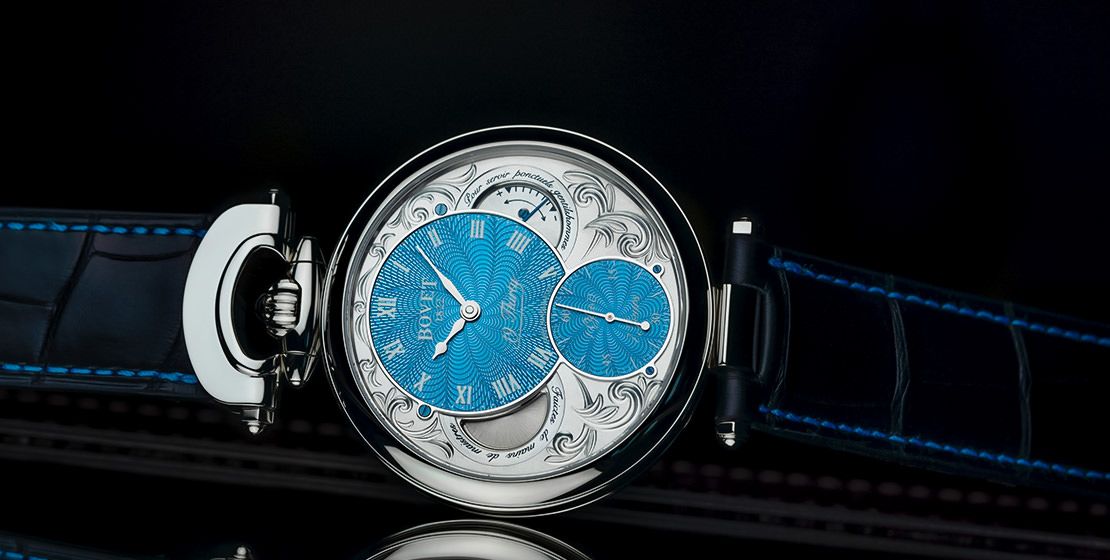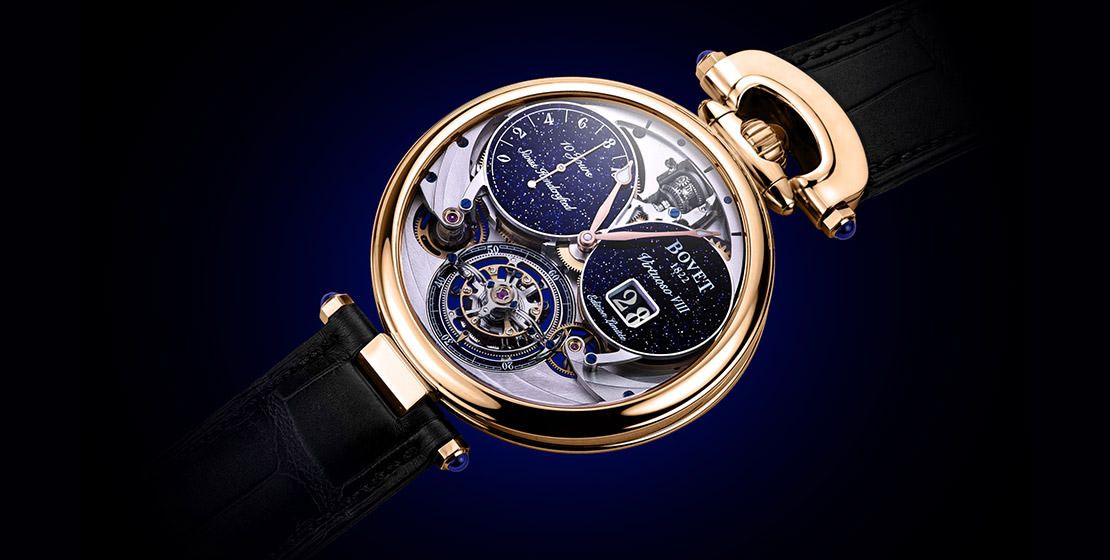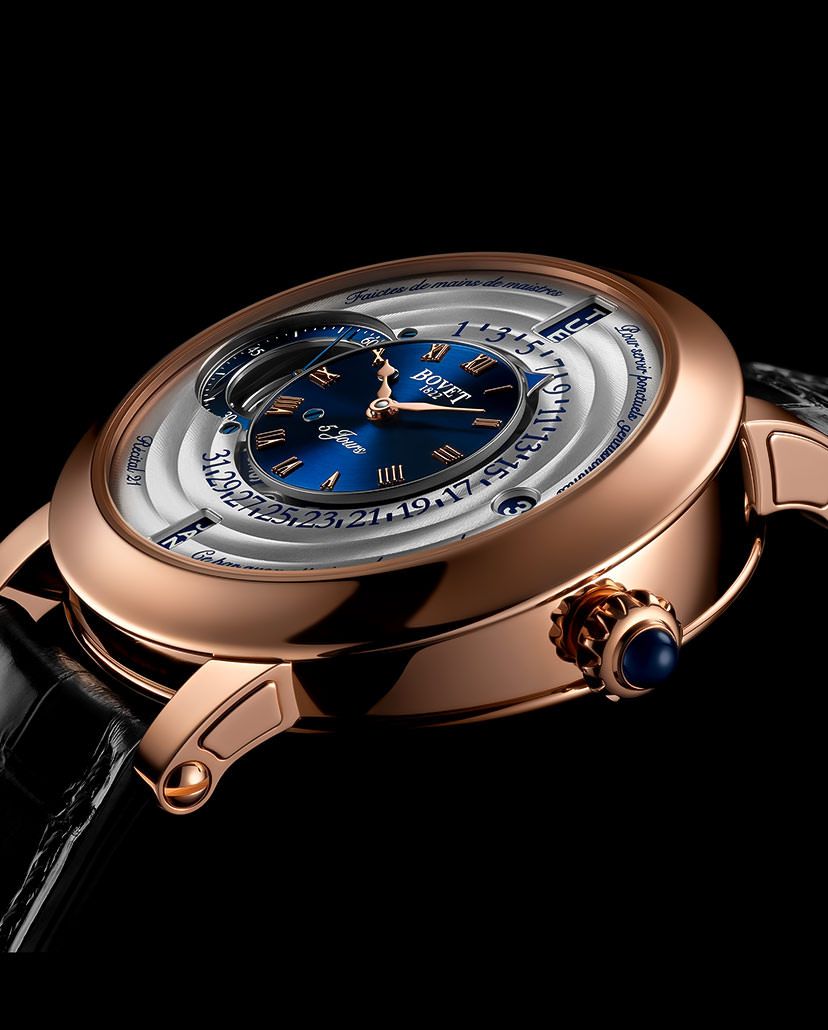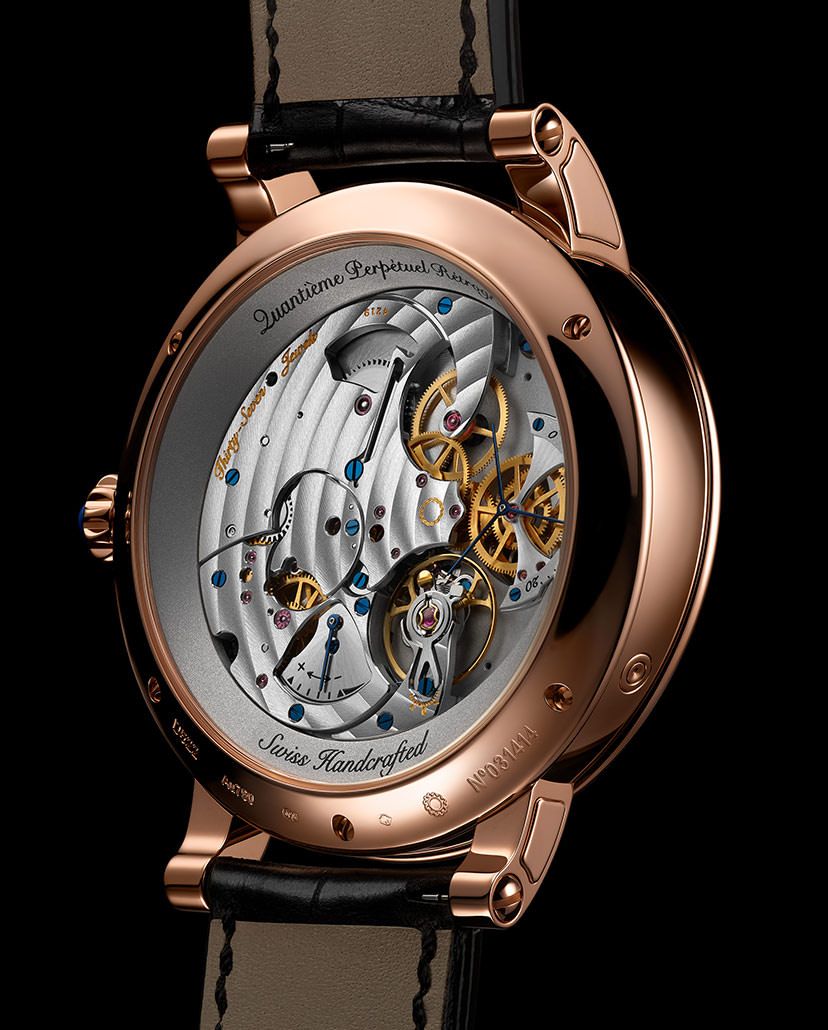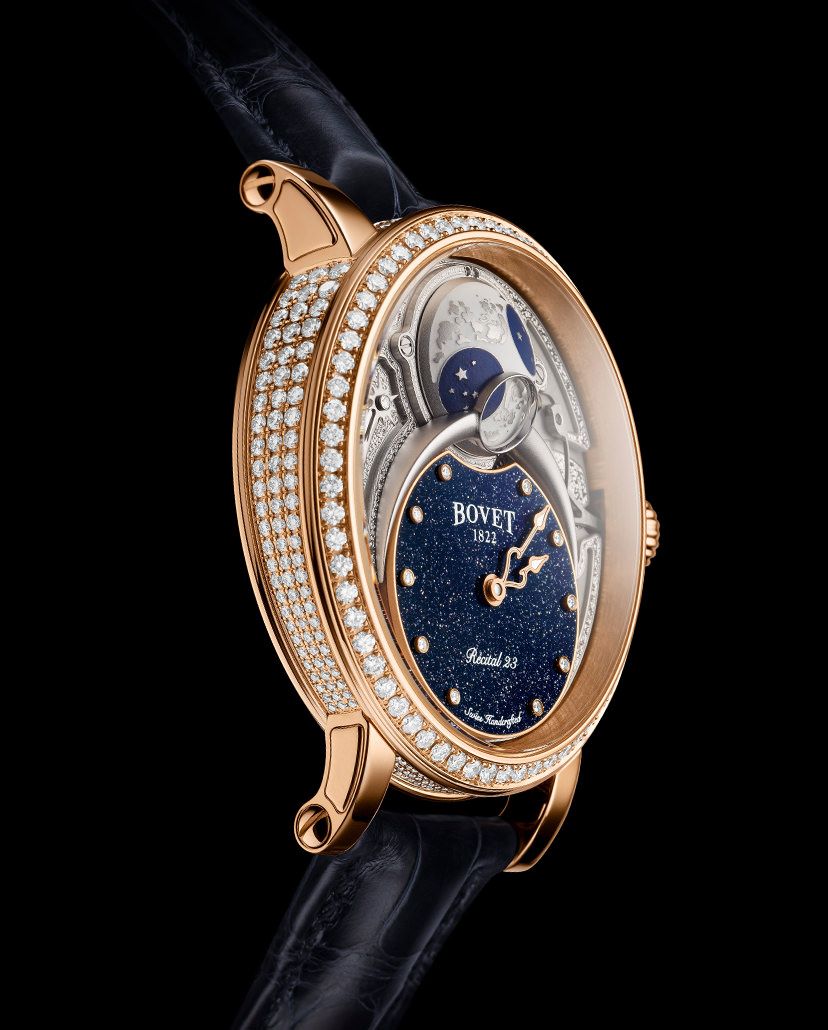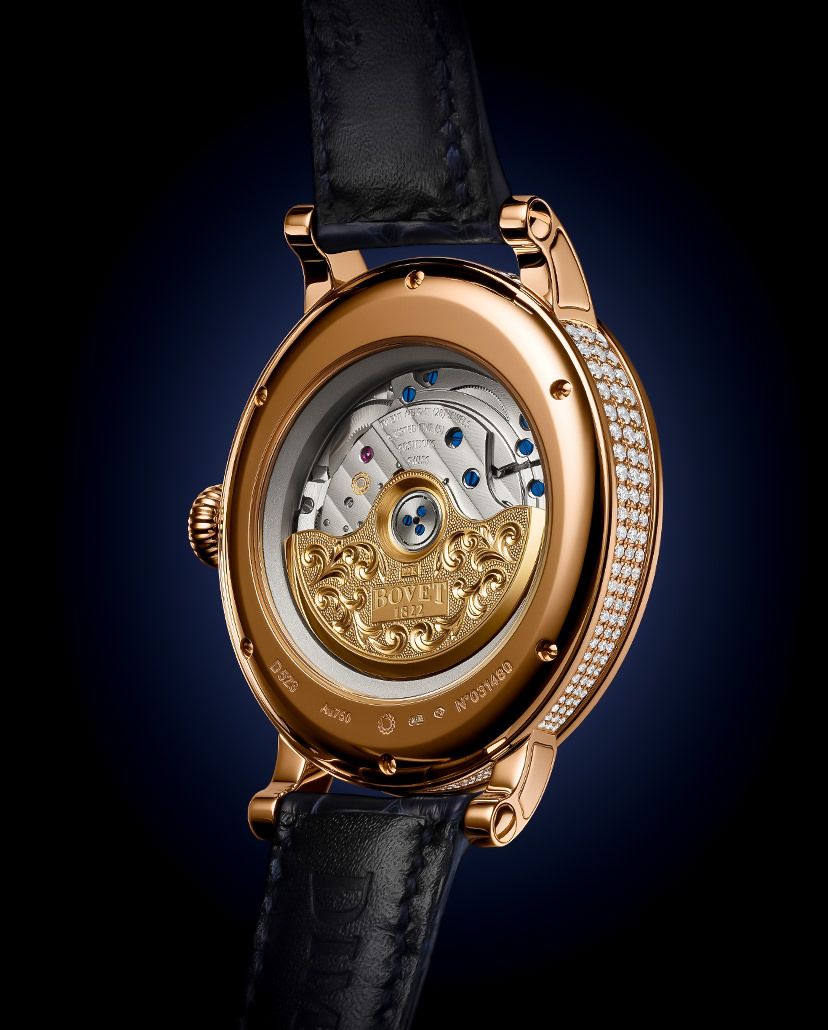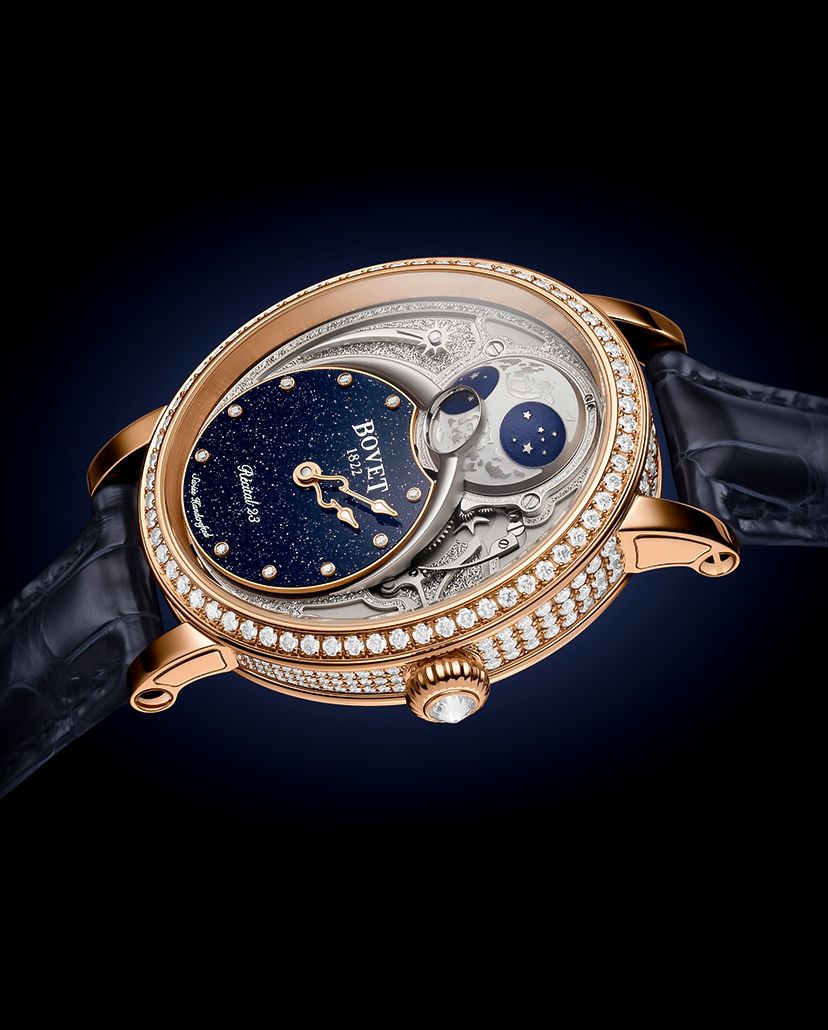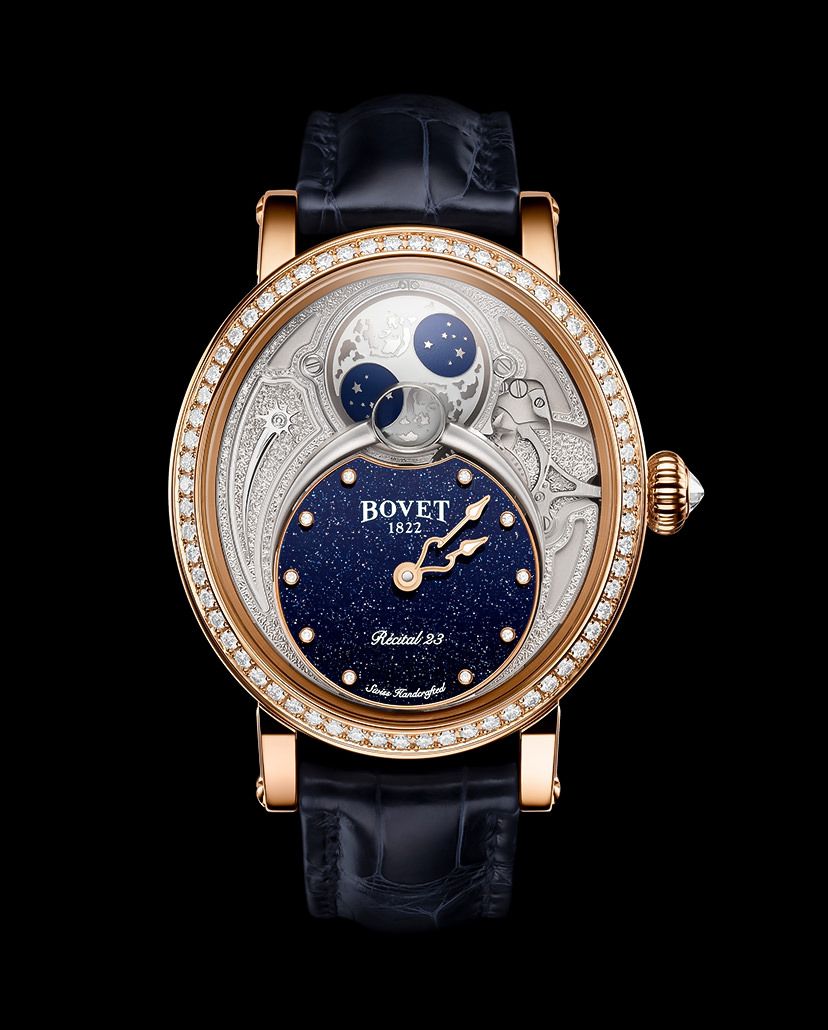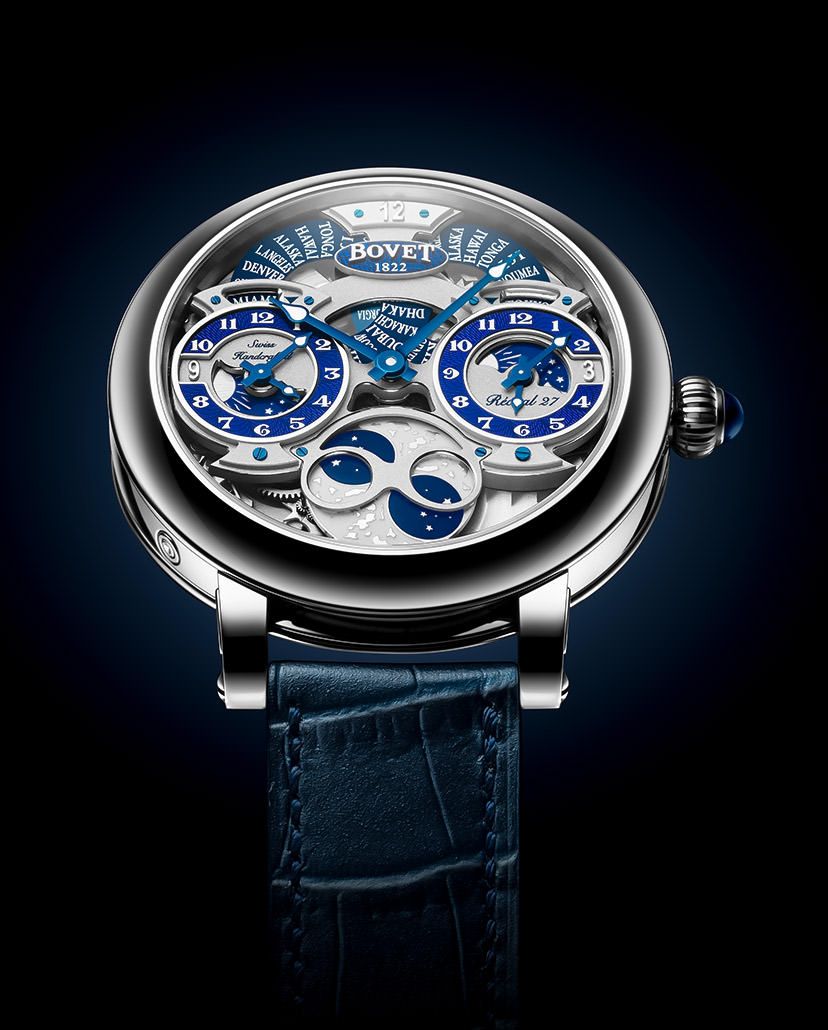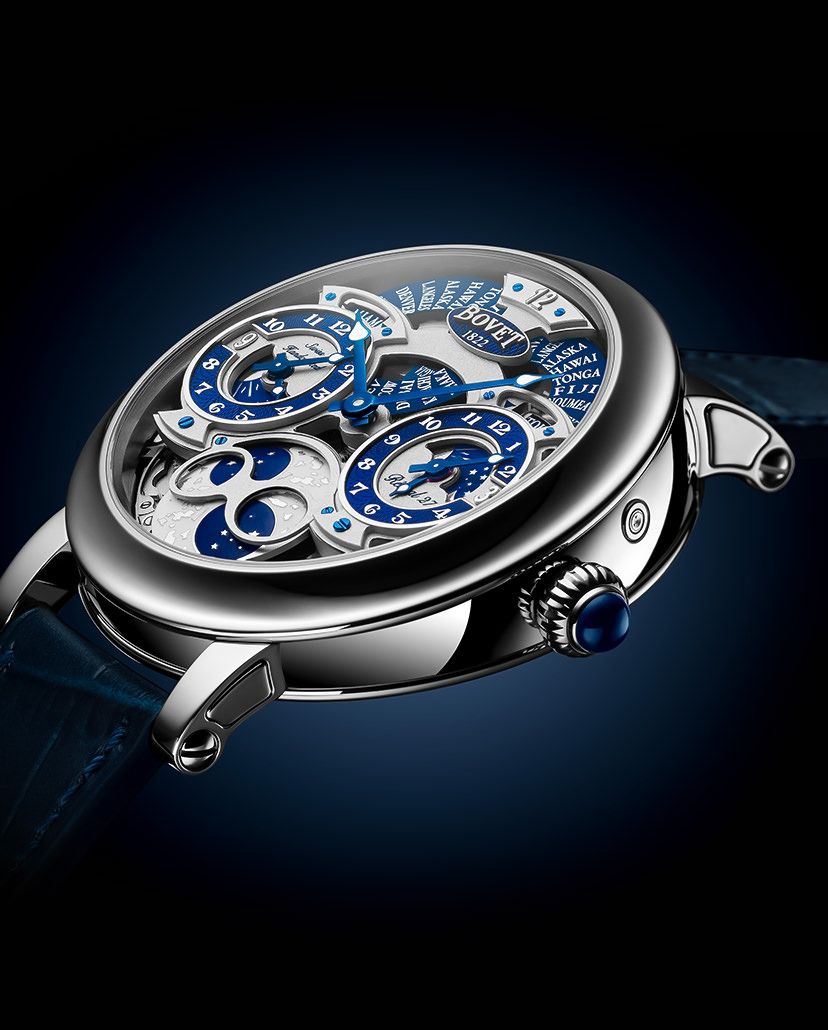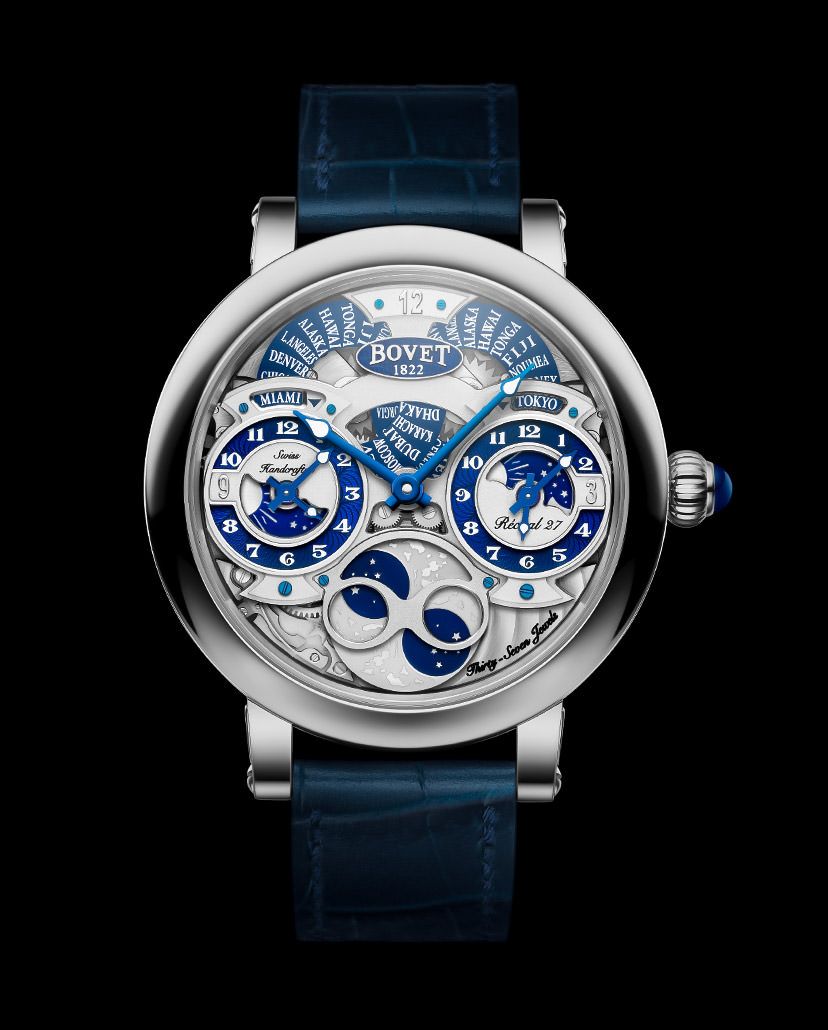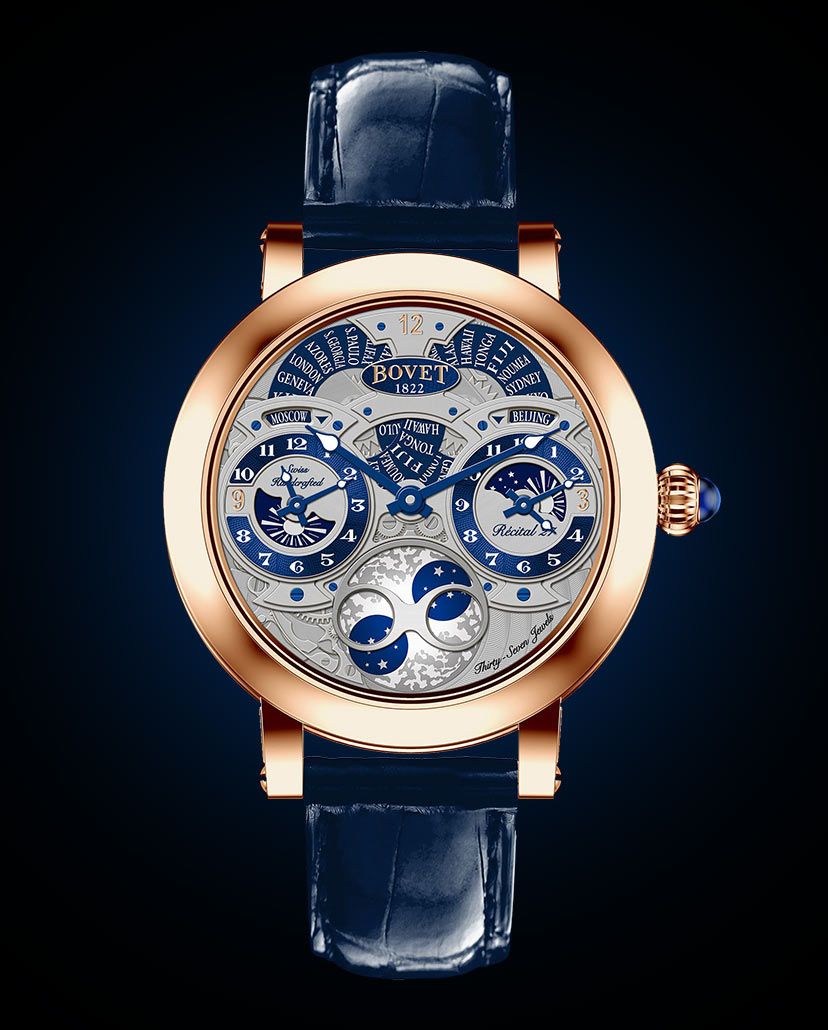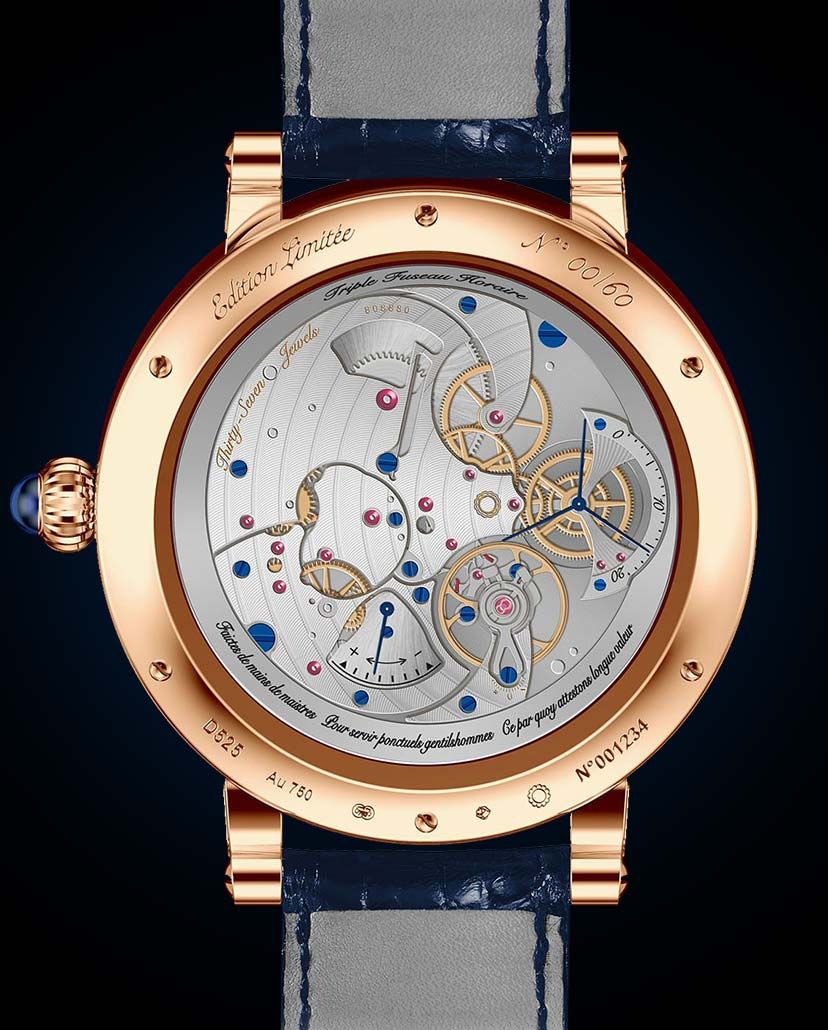FeatureBedazzling Bovet: Behind The Brilliance And The Beauty
The exquisitely decorated, artistic timepieces from Bovet may not be everyone’s cup of tea, but one can’t deny their brilliance and exceptional quality. Let’s take a closer look at some of the Swiss maison’s stunning pieces of timekeeping jewellery, and explore their origins and inspirations
May We Recommend
If you take a look at any selection of Bovet watches, it will instantly become clear what this brand is about. These are exquisite timekeeping works of art in more ways than one. With extremely decorative details—intricate engraving, gem-setting, refined textures, very highly considered designs and true splendour all across—these watches are like pieces of jewellery that are about so much more than the time that they tell. These timepieces are quite evidently not meant for those who prefer minimalism and simplicity. They’re not understated in any way and would most certainly appeal more to individuals who appreciate fine craftsmanship that is lent to a very emotive expression of timekeeping. However that’s not to say that the timekeeping itself is compromised on in any way. With chronometry as a strong pursuit, and several offerings with high complications in addition to basic timekeeping, Bovet are true watchmakers in every sense. And even in the timekeeping components, they present resplendence in the details, with finely finished bridges and plates, decorated to offer a visual treat to any beholder. In fact, it’s quite interesting to know that they were the first watch manufacturers to create watches with transparent casebacks—something that we take for granted these days. This dates back to the 1800s, when the brand was blossoming, and their products were being recognised for their detailing and intricacies.
Around The World In The 1800s
It all started with Edouard Bovet, born 1797, the son of a master watchmaker, who followed in his father’s footsteps and trained to pursue the same trade. In the 1800s, Bovet left his hometown of Fleurier in Switzerland, with his brothers, Alphonse and Frédéric, and they took their business to London, the major hub of watchmaking in Europe at the time. In 1818, Bovet took some of his creations to China in a ship belonging to the East India Company, and arrived in Canton, the point of entry for merchandise being imported. Here, he sold four pocket watches, for CHF 10,000 (equivalent to CHF 1 million today). Given the potential that Bovet had in China, the brothers expanded their business to London and targeted Canton as a primary market. At the time, decorative and ornamental clocks were in high demand in China, and taking Bovet in that direction helped define the brand significantly in its early years. With timepieces in precious metals, with embellishments of gems, and decoration of enamelling or miniature paintings, Bovet’s creations continued to be a success. As they hired the best enamellers and painters in Geneva and worked on engraving their movement components, Bovet made a fortune in China. Edouard Bovet returned to Fleurier in 1830, with his son, Edouard-Georges, and built a house named Palais Chinois (French for ‘Chinese Palace’), which today serves as Fleurier’s town hall. The brand’s international reputation continued to grow as they began to offer timepieces with transparent casebacks for individuals who appreciated the beauty of the mechanisms. It’s unlikely that they knew what a trendsetting move this would be.
Edouard Bovet died in 1849, at 52, and the company was left in the hands of his brothers and all their children. The Bovet brand continued to make great strides over the next few decades. Eventually, in 1957, the Chateau de Môtiers—in Val-de-Travers, in the state of Neuchâtel, Switzerland—which had become home to Bovet, was gifted by Edouard’s great-grandchildren to the state. Fast forward to 2001… An affluent and passionate watch collector by the name of Pascal Raffy took over the Bovet brand, became the sole owner, and later even bought the Chateau de Môtiers, to set up Bovet’s first assembly workshop.
Modern-Day Bovet And Their State-Of-The-Art Watchmaking
In 2006, Raffy opened the Dimier 1738, Manufacture de Haute Horlogerie Artisanale, a manufacturing facility that would strengthen Bovet’s watchmaking expertise, affording the company a level of self-sufficiency that gave them control over specialisation and innovation. With the ability to carry out all manufacturing processes, as well as the creation of essential components in-house, Bovet grew from strength to strength.
Being able to master the making of balance springs and the entire regulating organ, in addition to an integration of the making of all components, till today, gives Bovet complete control over their movements’ performance, power reserve and accuracy to chronometric levels. Building their in-house capabilities also allows for control over developing complications and delivering impeccable timekeeping. Moreover, the maison have kept alive what the Bovet brothers set as the foundation of the brand—decorative arts, such as enamelling, miniature painting, hand engraving, and component decoration.
Fleurier—A Celebration Of The Romance Of Pocket Watches
While all Bovet watches present an astounding level of decoration and finishing, it’s the Fleurier collection that best represents the history of Bovet that was defined by the intricate detailing in pocket watches that became their greatest initial success. The Fleurier watches present round cases with singular lugs, with the time-setting crown and a ‘bow’ at 12 o’clock, which are the elements that hark back to traditional pocket watches. In fact, several modern-day Fleurier timepieces also celebrate a very distinctive design from the brand’s past, through their renowned Amadéo convertible case. It was in 1939 that Bovet filed a patent for an ‘easel’ watch—a pocket watch with a collapsible stand that allowed it to be used as a table clock as well. Today’s Amadéo cases have this same feature that converts a pocket watch to a table clock, but in addition to that, it can also be converted into a wristwatch, with a strap. This system, which was patented in 2010, requires no tools, and also facilitates the reversing of the watch on the wrist, as several Fleurier watches with the Amadéo case have two dials, one on either side. Invisible push-pieces release the strap from the bow and the lower lug, and the upper one is also used to attach the watch to a pocket watch chain or necklace—the latter being primarily for ladies’ watches that are meant to also be pendant timepieces.
Fleurier Miss Audrey Sweet Art
The Amadéo case concept is used in various degrees—in watches that may not even have a second dial on their reverse. Such is the case with the Miss Audrey series that celebrates the essence of the Amadéo concept. It is named after Audrey Raffy, Pascal Raffy’s dauther, who joined forces with her father in 2020. The first Miss Audrey watch won the ladies’ watch prize at the 2020 GPHGs (Grand Prix d’Horlogerie de Genève).
While earlier editions of the Miss Audrey watch featured beautiful dials with guilloche engraving or with aventurine glass, the Miss Audrey Sweet Art series has a dial crafted from actual sugar, laid out in ombre colouring. Pure sugar crystals are treated so that they remain unaffected when subjected to light or heat, then they’re combined with special paint and hand-applied to the dial by Bovet’s miniature painting artisans.
The dials have been created in palettes of black and green, black and blue, purple and orange, and in pink—all with alligator leather straps in complementing hues, as well as pearl or rhodium-plated silver necklaces.
Each piece is set in a steel case, measuring 36mm, with 103 round-cut diamonds on the bezel and bow, totalling 0.99 carats, as well as cabochon-cut sapphires set into the crown and strap bolts.
Bovet’s serpentine hands make way for a heart motif in this edition, when they come together at 12 o’clock. They run on an automatic movement that offers a 42-hour power reserve.
Fleurier 19Thirty Great Guilloché
Continuing the Fleurier collection’s tribute to the pocket watches made by the Bovet family is the 19Thirty series, named after the timepieces that the founding family made in the 1930s. Raffy launched this series in 2015, with a brand-new movement—the manual-winding calibre 15BM04, which offers a seven-day power reserve that is also displayed at three o’clock. While the series initially presented lacquer dials, this one here is the Great Guilloché edition, which features a dial with guilloche done by hand. It is then filled with layers of translucent lacquer, and finally polished to make the pattern really come alive with light falling on it from different angles. The off-centred timekeeping towards 12 o’clock and the small seconds at six are surrounded by a canvas for decoration, in the form of silver or blackened circular Côtes de Genève, or with a hand-engraved Fleurisanne pattern. Limited to 60 pieces, this watch comes in a 42mm steel case, in the signature Fleurier format, with the bow and crown at 12 o’clock, including the cabochon-cut sapphires set into the strap bolts. The 30m-water-resistant case comes affixed with an alligator leather strap.
Fleurier Virtuoso VIII Chapter Two
The Virtuoso VIII watches also present the signature Fleurier case with the bow and crown at 12 o’clock, but with elements of the Dimier collection’s cases, as it is the first Fleurier to feature an inclined glass aperture on the 12-to-six axis. The brand call it ‘the ultimate expression of artisanal watchmaking, decorative arts, mechanical ingenuity, and innovation’. The exposed steel of the plates is chamfered and polished, and it also reveals circular Côtes de Genève decoration. Raised above it is the tourbillon cage at six o’clock, with a bridge made from titanium to lower its weight and to enhance its anti-magnetism. It serves as the small seconds sub-dial too, while the central timekeeping hands seem raised further, adding to the visual depth of this fascinating display. At 10 and two o’clock, we see sub-dials in aventurine glass that display the power reserve and a large date respectively. This magnificent display is powered by the manual-winding calibre 17BM06-GD that offers a 10-day power reserve with a single barrel, which is a watchmaking feat in itself. The extraordinary movement and its gorgeous decoration, along with the other side of the tourbillon cage, can be seen through the exhibition back of the 44mm case in 18-karat red gold, which is water-resistant to 30m.
Dimier—The Highly Complex Watchmaking Masterpieces
Elevating the complication functions of Bovet’s watches are those from the Dimier collection—a line dedicated to the Dimier 1738, Manufacture de Haute Horlogerie Artisanale. This line moves away from the signature pocket watch-style template, as it adopts the conventional four lugs, and crown at three o’clock. The most distinctive feature of the case, however, is the ‘writing slope’ shape that inclines towards six o’clock, while it mostly features a convex glass, which we saw above in the Virtuoso VIII. This dimensionality enhances the view of the functions, and also enhances the visual depth of the watches. While the Dimier manufactory specialised in grand-complication pieces and only produced tourbillon movements, it later diversified. And the Dimier collection today continues to offer a medley of complications in highly detailed timepieces. Such is the case with all the Récital watches in this collection.
The Récital 21—perpetual calendar with a retrograde date
Apart from being beautifully decorated, on the face of it, the Récital 21 seems like a regular perpetual calendar watch. With the central timekeeping minimised in the centre, the seconds are at nine o’clock with an open-worked section. The day is at 12, month at six, and leap year at three o’clock. The date, however, surrounds the main timekeeping, and features a mechanism that slows down the indication when it’s making its retrograde jump back to the 1st at the beginning of the month. This dramatic visual is not only for effect, but also improves longevity of the mechanism and its reliability.
In addition to this interesting feature is the adjustability owing to its unique corrector. If you haven’t worn the watch for a while, a correction of the date will automatically adjust all the other displays, because of the fully synchronised movement. This fabulous movement—the manual-winding calibre 113DM05-QPR—offers a whopping five-day power reserve, which is indicated on the back of the movement, seen through the exhibition caseback of the 44.4mm 18-karat red gold case.
The Récital 23—moon phase display
A truly exquisite creation, this Récital 23 is the first Dimier ‘writing slope’ case in an oval shape, measuring 43mm by 28.7mm, and paved with round-cut diamonds, which complement the stone set into the time-setting crown. Essentially, it just displays the timekeeping, off-centred towards six o’clock, and the moon phase towards 12. However, the latter of the displays is presented in a fascinating three-dimensional form that takes advantage of the sloped case, while the phases of the moon are seen through an inclined aperture above the timekeeping sub-dial that is in aventurine glass. The surface of the dome of the moon phase display is engraved to mimic the lunar surface, and is filled with a luminescent material. The advanced moon phase complication needs correction only once in 122 years. This is a part of the automatic calibre 11DA17-MP, which offers a significant 62-hour power reserve, and can be seen through the display caseback in all its decorated glory. The winding rotor in 22-karat gold is stunningly hand-engraved with a Fleurisanne motif. Similar engraving can also be seen on the dial side, surrounding the displays.
The Récital 27—three time zones, moon phase, power reserve display
This watch looks more difficult to read than it is really. The open-worked nature of the display is primarily to showcase the decoration and the finishing of the exposed components, and also to lend visual depth to the display. At the centre, you see the local time, as you’d expect. At three and nine o’clock, there are two additional timekeeping dials, for two other time zones, along with discs for each, marked with cities representing all 24 major time zones. This makes referring to these zones simpler, as do the day-and-night indicators that are embedded into these secondary-zone sub-dials. Moreover, each time zone can be adjusted independently for enhanced functionality—especially useful when one has to consider changing time differences owing to daylight saving time.
At six o’clock is a dual moon phase indicator—for both, the Northern and Southern Hemispheres—with the moon surface engraved and treated with a luminescent substance for an enhanced visual. All this runs on the manual-winding calibre 17DM04-3FPL, which offers a staggering seven-day power reserve, which is indicated on the back of the movement, along with the small seconds. It comes housed in a 46.3mm case in titanium or 18-karat red gold.
The Récital 29—moon phase, power reserve display
Relatively simple in comparison with some of the watches we’ve already seen, the Récital 29 is still a stunner, with gorgeous guilloche work on its green timekeeping dial, off-centred towards 12 o’clock. Diametrically opposite it is the domed moon phase indicator, decorated with engraving that mimics the lunar surface and like the 27 above, also displays the phases seen from both the hemispheres. This indicator can be adjusted by pressing the sapphire that’s set into the time-adjusting crown. The 29 is powered by a manual-winding movement that can store a power reserve of up to five days—displayed discreetly towards nine o’clock on the dial. All this comes housed in a 42mm case, featuring a sapphire crystal caseback, and affixed to an alligator leather strap that complements the dial’s hue.

The watches from Bovet can appear to be a little overwhelming with all these features and complex mechanisms that are as detailed in their decoration as they are in their advancement. Moreover, the intricacies of the craftsmanship—from engraving and lacquering to enamelling and miniature painting and so much more—can be quite baffling. However, once you really understand what each element and each function in a timepiece from Bovet is about, it’ll just be a beautiful work of art to enjoy. Of course, that’s if you are so inclined to prefer such heavily resplendent timekeeping instruments. Whether Bovet is your cup of tea or not, there’s a lot to be appreciated about a brand that has taken forward a legacy in such an elaborate yet intricate way, with sheer innovation and 100-percent Swiss-made, handcrafted finesse.


